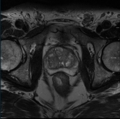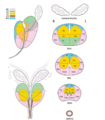Difference between revisions of "2017 Winter Project Week/ProstateSectorSegmentation"
From NAMIC Wiki
(Created page with "__NOTOC__ <gallery> Image:PW-Winter2017.png|link=2017_Winter_Project_Week#Projects|Projects List <!-- Use the "Upload file" link on the l...") |
|||
| Line 3: | Line 3: | ||
Image:PW-Winter2017.png|link=2017_Winter_Project_Week#Projects|[[2017_Winter_Project_Week#Projects|Projects List]] | Image:PW-Winter2017.png|link=2017_Winter_Project_Week#Projects|[[2017_Winter_Project_Week#Projects|Projects List]] | ||
<!-- Use the "Upload file" link on the left and then add a line to this list like "File:MyAlgorithmScreenshot.png" --> | <!-- Use the "Upload file" link on the left and then add a line to this list like "File:MyAlgorithmScreenshot.png" --> | ||
| + | File:Prostate_MRI.PNG|Transversal slice of Prostate MRI. | ||
| + | File:SectorMap_Prostate.PNG|Sector Map according to PI-RADS v2. | ||
</gallery> | </gallery> | ||
Revision as of 15:22, 8 January 2017
Home < 2017 Winter Project Week < ProstateSectorSegmentationKey Investigators
- Anneke Meyer, University of Magdeburg (Germany)
- Andrey Fedorov, BWH
Project Description
| Objective | Approach and Plan | Progress and Next Steps |
|---|---|---|
|
|
|


